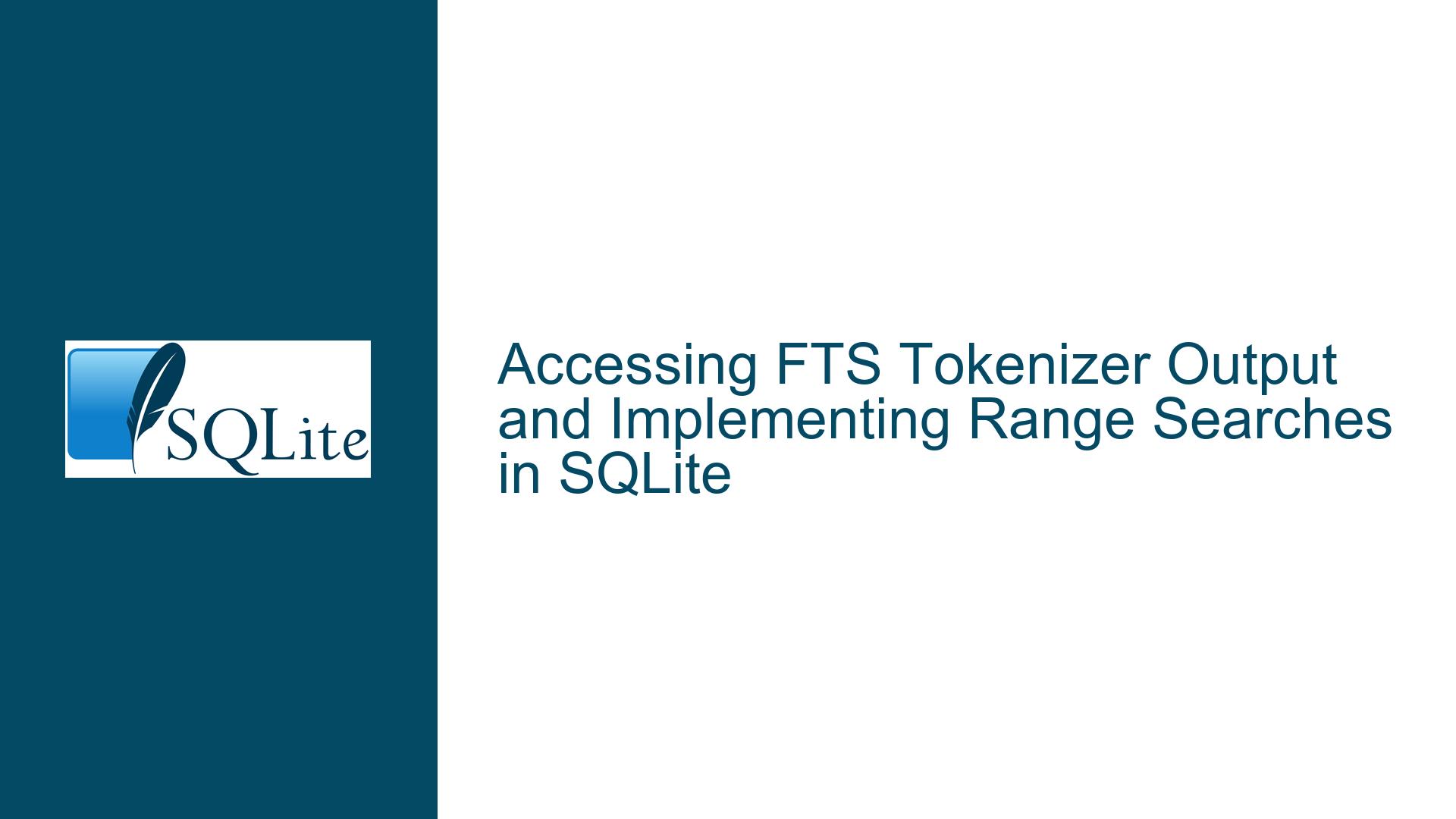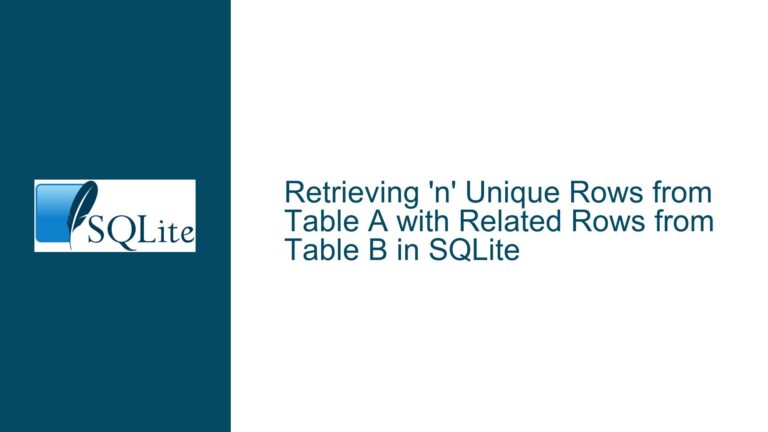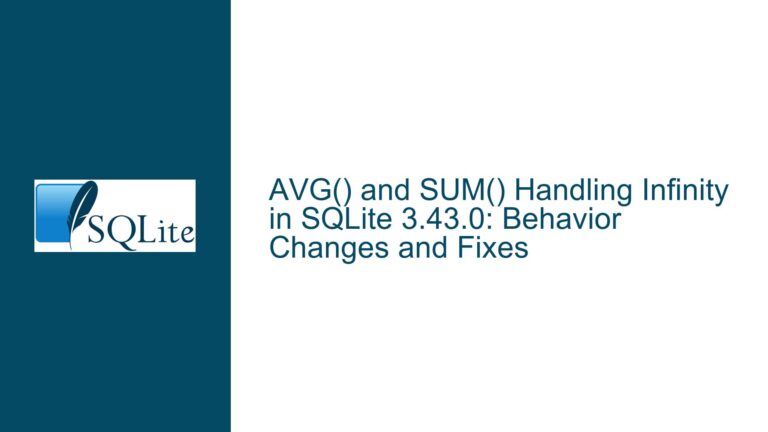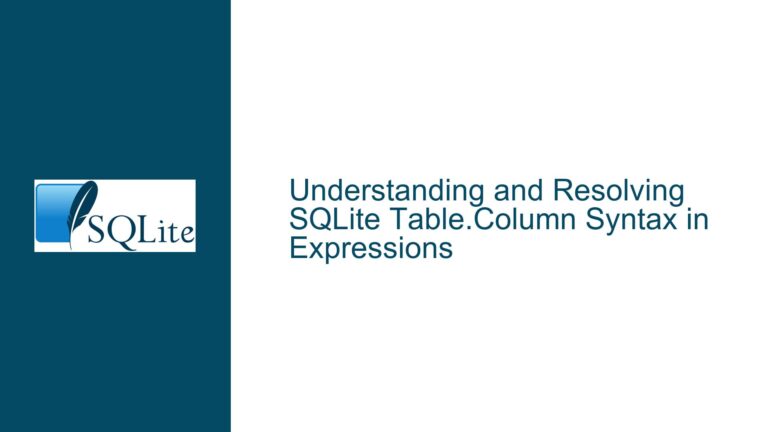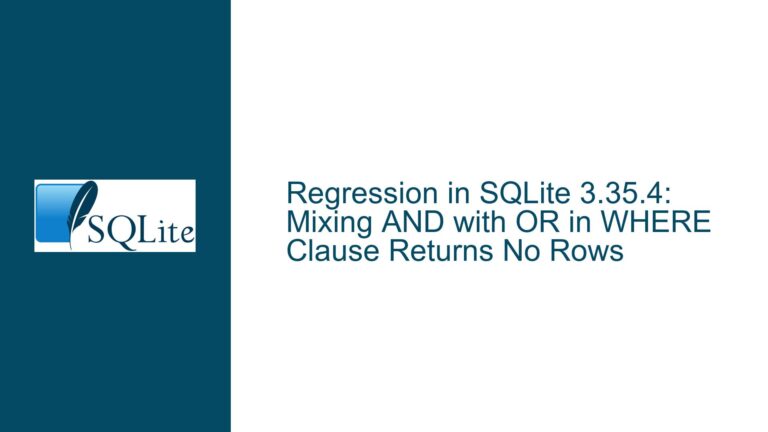Accessing FTS Tokenizer Output and Implementing Range Searches in SQLite
Retrieving Tokenizer Output for Custom Word Suggestion Mechanisms
The Full-Text Search (FTS) module in SQLite is a powerful tool for performing efficient text searches. However, one of the challenges users face is the inability to directly access the tokenizer output for custom purposes, such as implementing word suggestion mechanisms. The tokenizer is responsible for breaking down text into individual tokens (words), which are then indexed by the FTS module. The ability to access this tokenizer output would allow developers to maintain a shadow dataset of words, enabling features like word suggestions based on prefixes.
The primary issue here is that SQLite does not provide a straightforward way to access the tokenizer output directly. While the FTS module uses tokenizers like unicode61 to process text, there is no built-in function or API that allows developers to feed text into the tokenizer and retrieve the resulting tokens. This limitation makes it difficult to implement features like word suggestions, where you need to know all possible continuations of a given prefix.
To address this issue, SQLite provides the xFindTokenizer API, which allows developers to retrieve the tokenizer implementation. This API can be used to access the tokenizer and manually tokenize text for custom purposes. However, this approach requires a deeper understanding of the FTS module’s internals and may not be suitable for all developers.
An alternative approach is to use the fts5vocab virtual table, which provides access to the vocabulary of an FTS5 index. The fts5vocab table can be used to query the terms in the index, making it possible to implement word suggestions without directly accessing the tokenizer output. For example, you can create a virtual table using the fts5vocab module and query it to find the most frequent continuations of a given prefix.
Implementing Date Range Searches Using FTS5
Another common challenge when working with the FTS module is implementing range searches, particularly for dates. The FTS module is designed to handle text searches, and while it supports prefix searches (e.g., d202209* to match all dates in September 2022), it does not natively support range searches across different prefixes (e.g., d202101..d202205 to match dates between January 2021 and May 2022).
The issue arises because the FTS module treats each token as a discrete unit, and there is no built-in mechanism to handle ranges of tokens. When you perform a prefix search, the FTS module merges the document lists for all tokens that match the prefix. However, this approach becomes inefficient when dealing with ranges that span multiple prefixes, as the module has to merge a large number of document lists.
To implement date range searches, you can use the fts5vocab virtual table, which supports efficient querying of a range of terms. By creating a virtual table using the fts5vocab module, you can query the terms within a specified range and retrieve the corresponding documents. For example, you can create a virtual table using the fts5vocab module and query it to find all documents that contain dates between d202103 and d202208.
However, there are some limitations to this approach. The fts5vocab virtual table does not maintain persistent row IDs, which can cause issues when using certain query techniques. For example, if you split a query into two parts—one to retrieve the row IDs and another to retrieve the actual data—the row IDs returned by the fts5vocab table may not correspond to the actual records. This can lead to incorrect results when displaying the data in a grid or other user interface components.
Troubleshooting and Resolving Issues with FTS5Vocab Virtual Table
The fts5vocab virtual table is a powerful tool for querying the vocabulary of an FTS5 index, but it has some quirks that can cause issues in certain scenarios. One of the main issues is that the fts5vocab table does not maintain persistent row IDs. Instead, it assigns row IDs sequentially from 1 to the number of rows, regardless of the query conditions. This behavior can cause problems when using techniques that rely on consistent row IDs, such as splitting queries into two parts—one to retrieve the row IDs and another to retrieve the actual data.
To work around this issue, you can modify your query renderer to handle virtual tables differently. Instead of relying on row IDs, you can perform a full load of the data when dealing with virtual tables like fts5vocab. This approach ensures that the data is retrieved correctly, even if the row IDs are not consistent.
Another approach is to modify the virtual table implementation to return a false value for the xColumn row ID column. This effectively emulates a WITHOUT ROWID table, forcing the query renderer to perform a full load of the data. While this approach requires more effort, it ensures that the data is retrieved correctly and avoids issues with inconsistent row IDs.
In conclusion, while the FTS module in SQLite is a powerful tool for text searches, it has some limitations when it comes to accessing tokenizer output and implementing range searches. By using the xFindTokenizer API and the fts5vocab virtual table, you can work around these limitations and implement features like word suggestions and date range searches. However, you need to be aware of the quirks of the fts5vocab table and adjust your query techniques accordingly to avoid issues with inconsistent row IDs.
